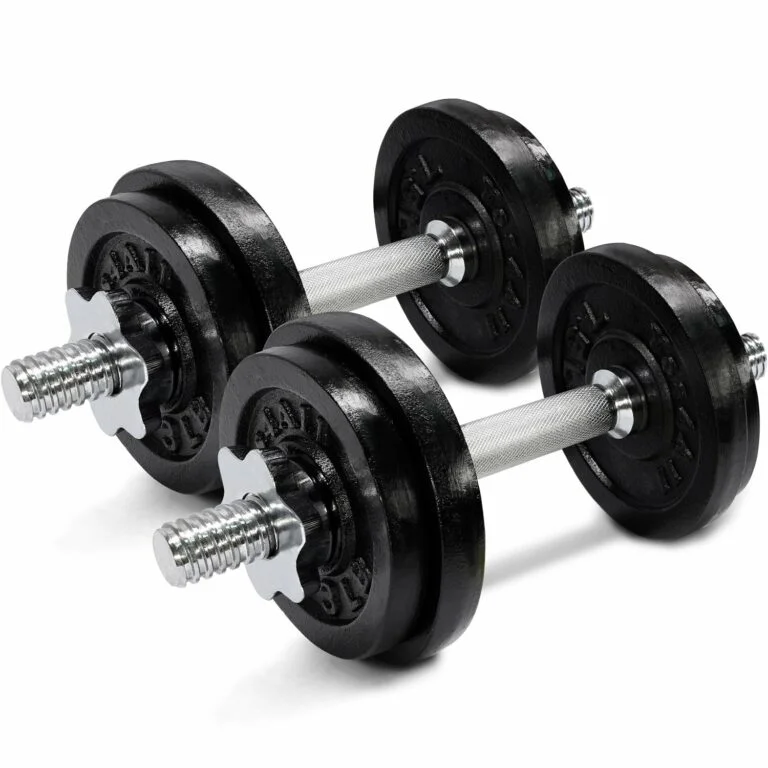How To Make A Jump Rope Heavier?
Are you looking for a way to make your jump rope easier to use? Maybe you want it to last longer. How about making it heavier, so it doesn’t break?
This article will go over ways to accomplish these tasks and some tips on making your jump rope last.

Heavy rope training is not hard to accomplish; it is just time-consuming. The rope can be made even more difficult if you want to work with it regularly because more strength will be needed.
One of the simplest ways to make your rope heavier is by adding weights to some individual wraps. This may help make a long jump rope last longer or help increase the speed of a new one.
Benefits of heavy jump rope training
If you don’t want your jump rope to break, you need to make it more difficult than normal. One way to do this is with a heavier rope which will not become brake quite as quickly, especially if you throw in some extra weights in the form of rocks or sand.
Another reason that a heavier jump rope is helpful is that it can increase overall athletic ability while working on many other activities.
A heavy rope improves hand/fist strength while making exercises easier and safer to do with less risk of injury.
It also helps increase conditioning and coordination. Your upper body also gets a workout along with your lower body, making it easier to do other exercises without worrying about strength.
Heavy rope training is also great because it helps build up endurance and stamina. You will be able to go for longer periods without getting tired quite as easily if you train with one regularly.
It is also a great way to get into shape and lose weight.
The added weight in the individual wraps of a heavy rope will not be as dangerous as a heavier rope, but you should still be careful with your hands.
You can get seriously hurt by hitting your head on the ground or dropping the rope on yourself.
Steps to make a jump rope heavier
Weight placement:
Determine the amount of weight you want to add and how many wraps you want to add. You should keep a picture of the jump rope around, so you are sure to remember how much weight is on each wrap. You can add rocks or sand as well.
Anything that is heavy will work; make sure it is small enough to fit in between the individual wraps of string.
Rope design:
- Get out your jump rope and a measuring tape.
- Measure the length of the ropes, noting the weight of each wrap. This will help you decide how much weight will be added to each wrap.
- Write down all of your calculations.
- Wrap length: Measure each wrap on all three pieces of the rope by wrapping a measuring tape around it from front to back, side to side, and crosswise, as shown in the pictures. Be sure to keep track of where you placed all your weights, so you give equal weight increases across all the wraps.
Ropes like braided ropes, plastic ropes, and ropes with handles are all designed for different things. See what you have, and if it is not working as well as desired, it might be time to purchase one that is better suited for your needs.
Ball-bearing connection:
Use non-circular rings with a hole to allow the ball bearings to sit in not to fall through. If you don’t have these rings, you can still use the jump rope by tying a string around each side of the ball bearings and looping it through to hang them from the rope.
Types of ropes
Braided
The braided ropes are pretty heavy and will last a long time. They come in a variety of colors and are great for fast backward jumping exercises.
These are usually stronger than the plastic or metal ropes you can find at the store, but they can break if used incorrectly.
Fabric jump ropes

These ropes can be used for other types of exercise other than jumping. They come in different colors and are relatively inexpensive. These ropes are good to have if you have a lot of time on your hands or just want to have fun playing with your rope.
Beaded rope

These plastic ropes are very light and easy to transport. They are great for outdoor use because they are durable and long-lasting. Most of them have a plastic coating on them, so they can’t hurt you if they come in contact with your skin. Plastic beads swing freely on the end of these ropes.
Leather ropes

These are very durable ropes that you can use for many different exercises. They are quite heavy so that they can last a long time. They are better suited for outdoor and indoor use because they hide on the end of the rope to prevent you from slipping off when jumping. There is no plastic or metal on the rope, so you will avoid any injury if it comes in contact with your skin.
Steel rope

These ropes are also durable and heavy. You can buy them by themselves or in sets with rings, weight cones, and other accessories to make them easier to transport or keep together while jumping.
Weighted jump ropes
Weighted jump ropes are for those who want to add some fitness and athleticism to their exercises. These ropes are made with heavy rings or balls hanging from them to make it harder for you to jump. This is an example of a heavy rope being used with different types of equipment.
PVC rope

These ropes are also commonly used for fitness and athletic purposes. They can be used for cardiovascular exercise, and you can use them as resistance in your workout to increase strength or speed. Pvc ropes are made of PVC pipes wrapped around a core, and they are very durable.
Remember, when you are doing weighted jump rope training, you should always land on the balls of your feet. You want to keep your body in a straight line while jumping and landing.
If you start to bend forward or backward, this will cause a strain on your lower back and knees. If you are going for more advanced training, then you may want to consider lighter weights in the ropes.
Steps for making your own jump rope heavier at home
- Tie a string around each side of the ball bearings that are being used. This can also be done with smaller rocks or other types of weight that are small enough to fit between the individual wraps of yarn in the jump rope.
- Thread the string through the hole in each ball bearing ring. Attach one end of the rope to the other side so you won’t lose it when doing jumps.
- Wrap each individual wrap of string around a heavyweight until it is about one-fourth heavier than your normal jump rope. You can use sand or rocks for this task if you have them available.
Now, put on your jumping harness and jump rope and start your exercises!
Final thoughts
Hopefully, this article has helped you learn how to jump rope heavier and take some of the guesswork out of it. Many different exercises can be done with a weighted jump rope, but it is important to follow the proper safety precautions when doing any of these exercises.
Make sure you always think about your safety when using exercise equipment. Always make sure to stretch properly before and after your workout.
If you have any injuries or heart conditions, please consult a physician before starting a jump rope program.
By adding weight to your jump rope, you can make it much harder than it normally is, which will allow for more intense training sessions.
That being said, the added weight will come at the cost of speed. So it all depends on how fast you want to be jumping and how fast you want to be going when doing this type of exercise routine.






